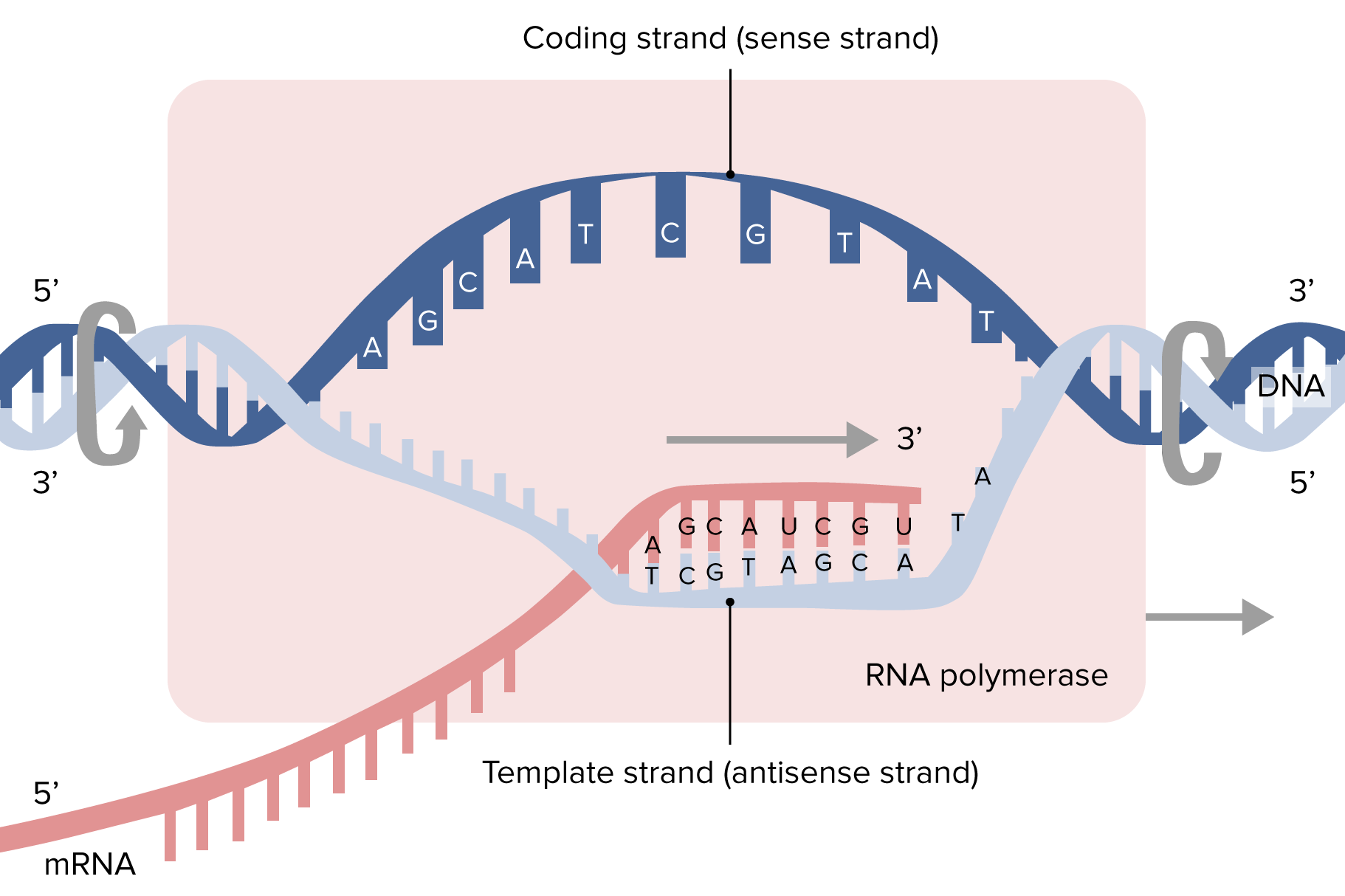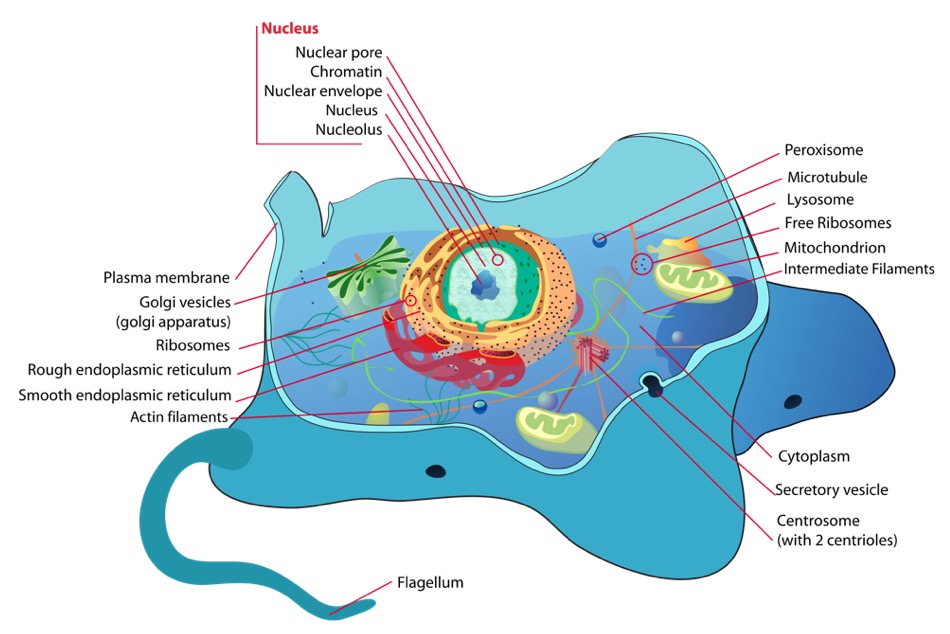Playlist
Show Playlist
Hide Playlist
Repressible Operons
-
Slides 10 GeneRegulationProteins Genetics.pdf
-
Reference List Molecular and Cell Biology.pdf
-
Download Lecture Overview
00:00 Betrachten wir nun den umgekehrten Fall. Wir haben uns ein System angeschaut, das in seinem normalen Zustand AUS war. 00:07 Jetzt werden wir uns ein System ansehen, das in seinem normalen Zustand AN ist. Wenn die Zelle arbeitet, stellt das Trp-Operon ein repressives System dar. Da das System AN ist, müssen wir es inhibieren, und die Produktion nachgeschalteter Gene zu verhindern. 00:32 In diesem Beispiel geht es um Tryptophan und das Trp-Operon. Tryptophan ist eine Aminosäure. 00:41 Es gibt einen Stoffwechselweg zur Erzeugung von Tryptophan. Wenn wir Tryptophan herstellen wollen, müssen entsprechende Gene aktiv sein. Wollen wir kein Tryptophan herstellen, müssen diese Gene nicht aktiv vorliegen. Diesmal ist das Repressorprotein, für das das vorgelagerte Repressorgen codiert, inaktiv. 01:02 Es kann im Normalzustand nicht an die Operatorregion auf der DNA binden, sodass Gene konstitutiv transkribiert werden. Die Polymerase kann am DNA-Strang entlangwandern und die Gene transkribieren, die an der Herstellung von Tryptophan beteiligt sind. 01:23 Wir haben nämlich wenig Tryptophan. Haben wir hingegen viel Tryptophan, ist das nicht notwendig. 01:30 Hier sind alle Enzyme, die an der Herstellung von Tryptophan beteiligt sind, abgebildet. 01:36 Wenn aber viel Tryptophan vorhanden ist, müssen wir diese nicht weiter synthetisieren. Tryptophan bindet dann an das regulatorische Protein und aktiviert es. Dieses Repressorprotein kann daraufhin an die Operatorregion auf der DNA binden und die Polymerase daran hindern den DNA-Strang entlangzuwandern. 01:58 Wir haben also ausreichend Tryptophan und müssen kein weiteres herstellen. Das Produkt Tryptophan selbst aktiviert einen Repressor, der die Genexpression von Enzymen hemmt, die an der Herstellung von Tryptophan beteiligt sind. Das ergibt Sinn, nicht wahr? Das ist kompliziert. 02:18 Deshalb empfehle ich Ihnen, einen Tabelle zum Vergleich induzierbarer und unterdrückbarer Operons zu erstellen. 02:25 Induzierbar bedeutet, dass das Operon ausgeschaltet ist. Es muss zunächst aktiviert werden. 02:30 Unterdrückbar bedeutet, dass das Operon eingeschaltet ist. Es muss inaktiviert werden, wenn keine weiteren Produkte hergestellt werden sollen. Beispiele sind das Trp-Operon und das lac-Operon. 02:45
About the Lecture
The lecture Repressible Operons by Georgina Cornwall, PhD is from the course Gene Regulation.
Included Quiz Questions
Which of the following statements is NOT true regarding repressible operons?
- The trp operon found in E. coli is a group of genes that encode biosynthetic enzymes for the amino acid alanine.
- RNA polymerase keeps on transcribing the repressible operon in the normal state.
- The presence of tryptophan shuts down the activity of the trp operon by binding to and activating the repressor protein.
- The trp operon is an excellent example of a repressible operon in bacterial cells.
- The activated repressor protein binds to the operator site of the trp operon and halts the movement of RNA pol to transcribe trp genes.
What is the difference between a gene that is repressed and one that is induced?
- A repressible gene is turned on in its native state until a repressor molecule binds the operator. On the other hand, an inducible gene is turned off in its native state until an inducer molecule is activated to turn it on.
- Repressible genes are turned on in the presence of an inducer molecule. On the other hand, a gene that is induced is turned on because a repressor molecule is absent.
- A repressible gene is turned off and an induced gene is activated to be expressed.
- There is no functional difference between a gene that is repressed and one that is induced.
- A repressible gene is turned off in its native state until a repressor molecule binds the operator and turns it on. On the other hand, an inducible gene is turned on in its native state until an inducer molecule is activated to turn it off.
Customer reviews
2,7 of 5 stars
| 5 Stars |
|
0 |
| 4 Stars |
|
1 |
| 3 Stars |
|
1 |
| 2 Stars |
|
0 |
| 1 Star |
|
1 |
Despite the mishaps, I thought the information was understandable. Especially the ending when she connected Trp and Lac operons with repressible and inducible.
The lecturer tripping up make it a little difficult to follow but it is made clear in the end.
This is incredibly difficult to follow with the lecturer mis-speaking constantly





